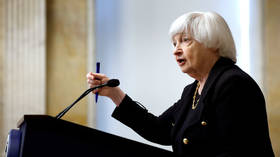Market Buzz: US sequester adds to correction worries

With the US sequester to come into effect on Friday night, the possibility of a market correction will be quite high on March 1, forcing investors to be careful in choosing their strategy.
The harsh budget cuts are scheduled to begin at midnight in the
US, with no hope of a last-minute deal in Washington.
The sequester aims to trim around $85 billion from the US budget,
with the cuts divided equally between defense spending and social
programs.
The news from the US won’t have a significant short-term effect,
but could lead to a worsening economic forecast, with the market
reacting immediately.
Trading on the first day of March will also be influenced by the
release of macroeconomic statistics in Europe: February PMI data
will be published, with the value expected to remain at 47.8
points. Also revealed on Friday will be January’s unemployment rate
in the eurozone (a slight increase to 11.8 percent) and regional
inflation indicators (annual rates are expected to fall to 1.9
percent).
Despite the huge amount of data, European markets are not expected
to drive global growth.
Russian stocks fared mostly poorly on Thursday, with the MICEX
falling 0.08% to 1486.04 and RTS inching up 0.25% to 1534.41. Good
news on GDP growth in the United States and the appointment of a
new Central Bank director in Japan later was marred by unemployment
data from Germany and reports that the Spanish economy contracted
for the sixth quarter in a row.
US stocks fell on Thursday, ending the month with 1% growth.
Mixed economic data dampened sentiments on Wall Street, as markets
looked toward draconian government spending cuts set to begin
Friday. The Dow Jones Industrial Average shed 0.2%, to end at
14,054.49, the S&P 500 fell 0.1% to 1,514.68 and the Nasdaq
Composite fell 0.1% to 3,160.19.
Asian stocks traded mostly lower on Friday, with a pair of
lackluster manufacturing reports from China doing little to help
sentiment. Hong Kong’s Hang Seng Index and Shanghai Composite Index
both went down 0.5%, while New Zealand’s NZSX 50 retreated 0.1% and
Australia’s S&P/ASX 200 index went down 0.5%. Japan’s Nikkei
Stock Average managed to gain 0.4%, while South Korean markets were
closed for a holiday.
Data on Chinese manufacturing published on Friday didn’t do much to lift the market’s mood – according to an official survey on growth in the sector, activity slowed almost to a halt in February. The China Federation of Logistics & Purchasing’s version of the manufacturing Purchasing Managers’ Index (PMI) fell to 50.1 from the previous month’s 50.4, missing expectations of a rise to 50.5.
Gold futures fell for a second straight session in New York on
Thursday, ending February with a fifth straight monthly loss,
sending gold producers lower in Australia.












